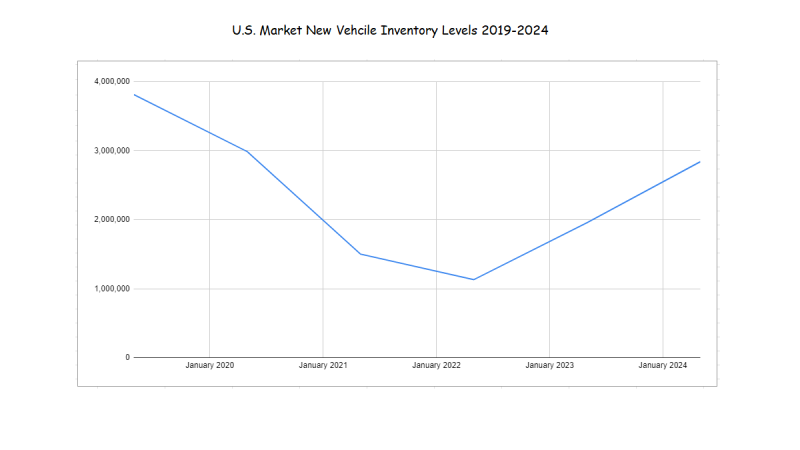New car inventory at U.S. retailers has been steadily growing since the vehicle shortage crisis ended. At the start of May, data analyzed by Cox Automotive shows that the new car inventory level now stands at about 2.84 million vehicles on dealer and retailer lots. That averages to a very healthy 76-day supply of new vehicles sitting on lots, waiting for their forever owners to show up and buy them at discounted prices. This is the highest May inventory since May of 2020. Today’s levels are 51% higher than last year, and inventory has grown by just under 1 million vehicles in the past twelve months.
Automakers Vowed Never To Return To the Days of In-Stock Vehicles - It Happened Anyway
The best part of this news for consumers is that it proves that big automakers cannot control themselves. They build cars whether they are wanted or not. “Automakers would love to only produce sold vehicles, but they know doing that would cost them market share as competitors offer lots full of vehicles to choose from and take home today,” says Karl Brauer, iSeeCars Executive Analyst. That desire to obtain market share leads to an oversupply, which leads to lower prices in the form of reduced MSRPs and heavy incentives like cash-on-the-dash discounts, crazy lease deals, and low interest rates. All of these tricks of the trade have now returned to nearly all manufacturers - though there are some exceptions for popular models.
Automakers Wanted Low Inventories Badly - Wishing Isn’t the Same as Getting
During the shortage crisis, I had numerous in-person, informal, off-the-record discussions with employees of major automakers. I asked if the days of long rows of cars in every trim and color sitting on dealer lots would ever return. Without exception, all the automotive company employees I spoke with told me, “Inventory will remain tight from now on, and ordering cars in advance of their build will become the norm.” Many added, "We will see the Tesla formula applied to all brands eventually.”
Sam Fiorani, Vice President of Global Vehicle Forecasting at AutoForecast Solutions LLC., also remembered those conversations. “In the depths of the semiconductor shortage, automakers realized they could make high profits on low inventories. Seeing this outcome, they proudly touted that they had seen the light and that inventory levels would never get back to pre-pandemic levels.”
Karl Brauer also recalls those brash predictions. “I wish I had a dollar for every time I’ve heard an automaker say, ‘We’re not going to rely on incentives anymore. It’s an unhealthy practice that damages the brand, and we’re going to be disciplined about our production levels going forward.’” Karl added, “I don’t think we’ll ever see the insane levels of over-production we saw before the government bailouts in the late 2000s, but the drive to grow sales and revenue will mean increasing levels of inventory and incentives going forward.”
Rather than legacy brands adopting Tesla’s “sell it before we build it” philosophy, the exact opposite has now occurred. Tesla is offering old-school discounts on inventory and low interest rates to help move iron. Karl Brauer observed, “More Americans are ordering cars than ever before, but it’s still a tiny minority of the new vehicle market.”
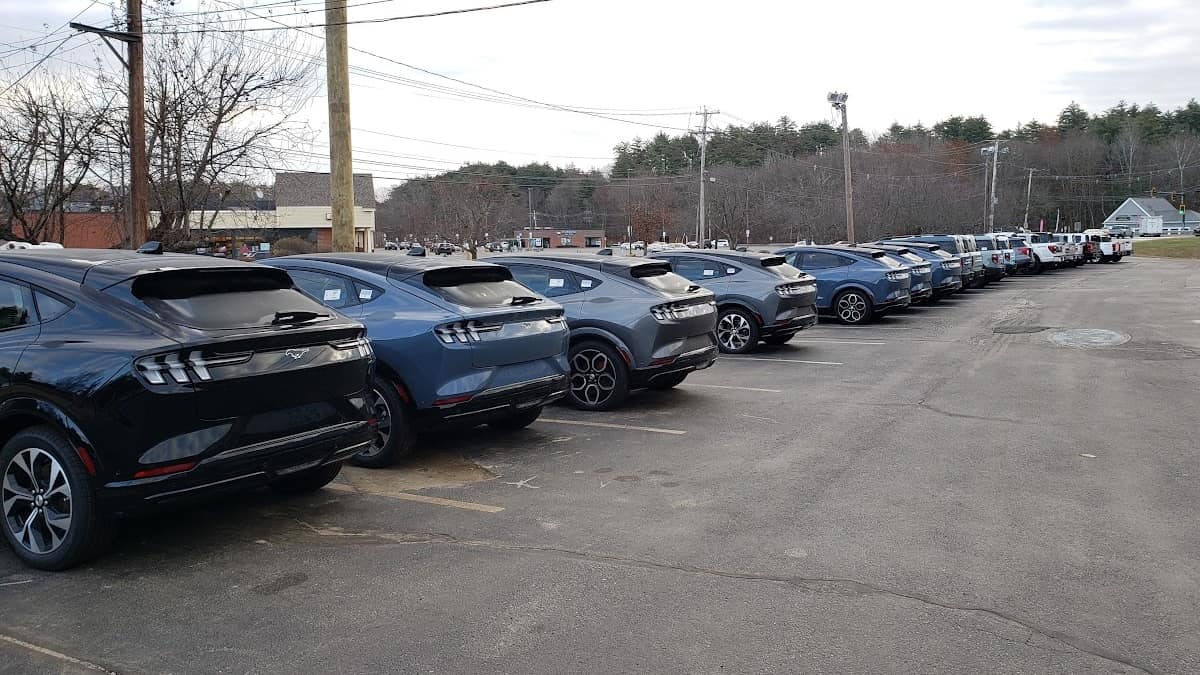
Which Brands Have Excess Inventory
Presently, the Stellantis brands, which partly consist of Jeep, Ram, Chrysler, and Dodge, have the most excess inventory. Both Jeep and Ram have double the industry average. Dodge now has six months' worth of Hornet inventory on hand, according to a CarScoops report.
Anecdotally, Tesla has been making news due to excess inventory. Tesla avoids participating in any type of industry reporting, and its PR department has either been laid off or has stopped responding, so data is always thin. Trending on the day this story was written was “Tesla's unsold inventory is creating stockpiles you can see from space.” While this does not help much with days of inventory estimates, Tesla’s recent (minimal) reporting has indicated that its production now far outpaces its deliveries. Therefore, inventory must be accumulating.
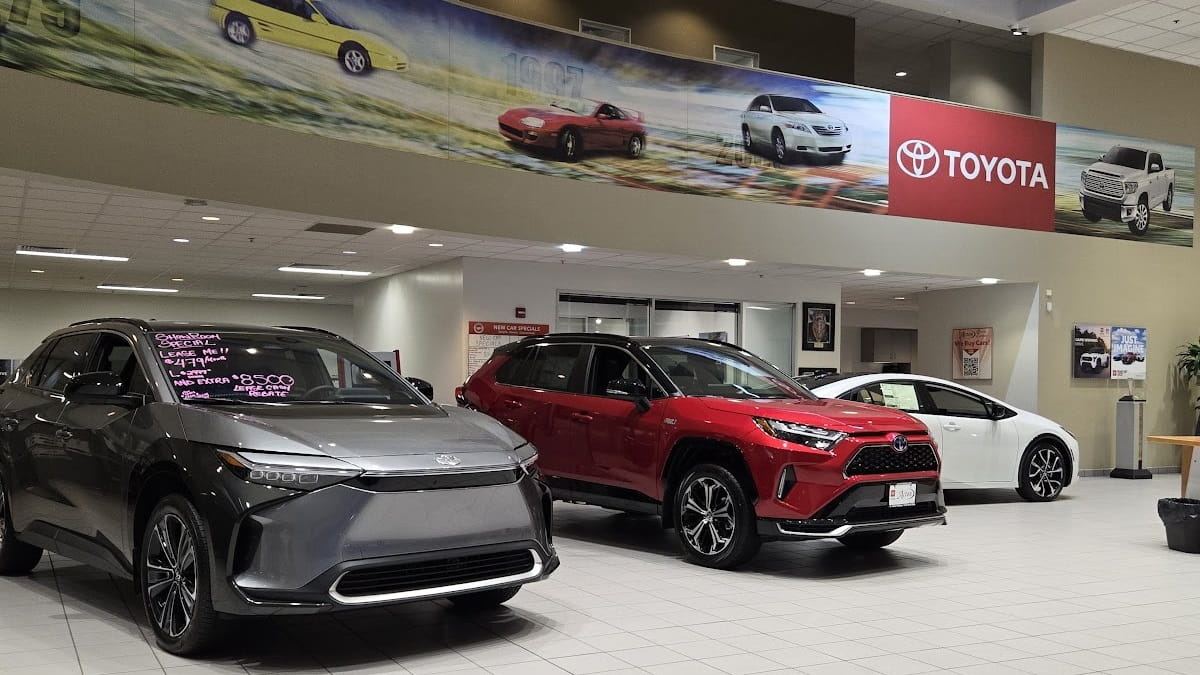
Which Brands Have the Least Inventory
The brand with the least inventory on hand is Toyota. And it is not due to production issues or any sort of problem. What has happened is that Toyota trusted itself rather than the opinions of a vocal EV advocacy minority and stuck with its proven hybrid technology. Green vehicle shoppers cannot get enough Toyota hybrids, and one by one, Toyota is dropping conventional powertrain options, making vehicles like the Venza, Crown Signia, Sienna and Camry Hybrid-only. Expect America’s top-selling crossover, the RAV4 to make the move to hybrid-only next.
Aside from reporting on this topic, I’ve experienced hybrid mania firsthand. My wife and I tried for over a year to find a RAV4 Hybrid in stock and at MSRP, but the waiting line to order one was longer than we were comfortable with. We ended up buying a similar but less well-known in-stock Toyota Venza (hybrid) instead at just over MSRP. This is a habit many American shoppers have, says Karl Brauer. “Most new car buyers want what they want, and they want it now. The dealer and manufacturer that best provides immediate gratification will have the advantage.”
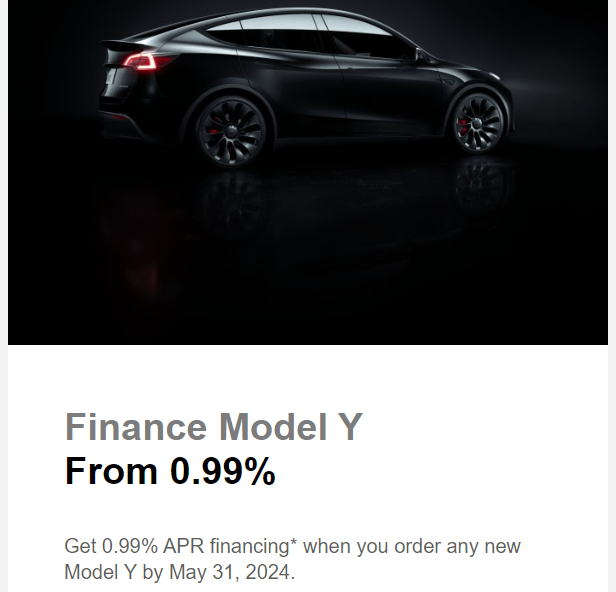
Which Models Need The Most Incentves To Sell
The overall market is healthy right now. People are buying new cars, and used car activity is also robust. The cars that need cash on the dash and low interest rates are those with battery-electric powertrains, are vastly overpriced, or both. Tesla, in particular, is using every old-school sales gimmick possible to move unwanted inventory. This is a big turnaround. During the shortages, Tesla raised prices numerous times to squeeze the most profit possible out of its consumers. Just like other brands’ dealers did. Since the end of the vehicle shortage, Tesla has slashed MSRPs, offered deep discounts on in-stock models, and is now advertising low interest rates. Many other EVs have been offered with special lease deals and other incentives since the end of 2023 when the suspected EV slowdown was confirmed by hard data.
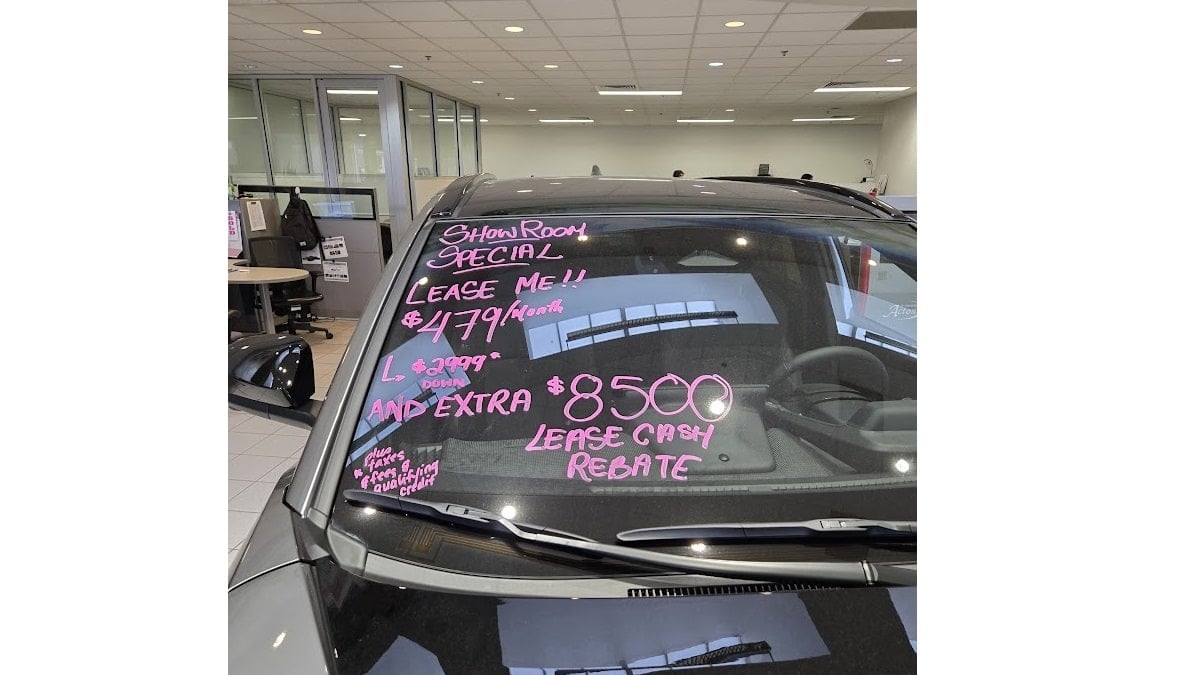
Sam Fiorani offered some expert insight here, saying, “By adding in the current push to sell more and more electric vehicles, despite the lagging demand, inventories have been boosted for high volume EVs like the Ford Mustang Mach E and F150 Lightning. We’ve returned to sea level.”
Why Inventory Is So Hard To Control For Manufacturers
All manufacturers, be they an almost entirely American-made company like Tesla, a company that primarily imports vehicles like Mitsubishi, or a company with a mix like Subaru, Mazda, and Honda, have a tough time managing the flow of products to U.S. consumers. Established models may have a legacy of buying trends, but new ones do not. It is very hard to predict the reaction to a new model, even when employing focus groups and other marketing tools.
One bad habit automakers and their dealers or retail locations adopted is using volume-based metrics to measure success and determine compensation. Sam Fiorani says, “Every regional representative has numbers to meet, and they tend to push for one more sale from every showroom. Each of those additions compounds, and sooner or later, we were destined to get back to the 'old normal' instead of the 'new normal' automakers imagined.”
Another aspect is factories. Factories need to run to pay for themselves. Equipment sitting idle is simply money wasted that could be put to good use. If a vehicle is selling slowly, and the manufacturer sees some seasonality or other factors indicating the vehicles will eventually move, they often keep the plant operating. It is easy to say, “Vehicles sitting on lots cost money,” but it is also true that not running a plant costs money.
Union rules and influence also contribute to oversupply. Unions have a few main goals. These include:
- Job Security and income security
- The highest possible compensation for the least possible work
- Safety and health of the workers
The first two goals of the union conflict with flexible production rates. Laying off workers when public opinion shifts has huge consequences for automakers. In some cases, they end up paying workers to come to work and build cars even if the vehicles are not needed to meet demand. That means vehicle inventories grow. If automakers try to keep production staff lean, when a model has a popularity spike, bringing union workers in on overtime adds to unit costs.
Looking Ahead - Inventories For late 2024 and 2025
Every analyst would love to offer specific predictions such as, “Inventory will settle down at 3,127,823 units in America,” but the truth is, experts with careers in logistics and product planning find it challenging to know what will happen to the U.S. car market and vehicle demand even six months out.
Here are some things external to the automotive market that could make a big impact on the economy and vehicle demand:
1) The withdrawal of a presidential candidate from the upcoming election
2) A Republican win in November
3) A Democratic win in November
4) The U.S. House of Representatives changing party leadership
5) The Senate changing party leadership
6) A pandemic
7) A war
8) A natural disaster
9) A housing bubble bursting
10) A lending crisis
11) A change in interest rates or inflation
12) The closure of a key port
In marketing, we call these things “uncontrolables.”
The Final Word On New Vehicle Inventories Summer 2024
If you are looking for a good deal on a vehicle this summer, overstocked models will have a better value than those in short supply. If you have been planning to buy a Tesla Model Y, Ram, Jeep, or Dodge, now is a great time to start visiting showrooms, carefully comparing and contrasting prices, and driving a hard bargain. If you want a Toyota hybrid, you should be prepared to pay full price, find a limited selection at local dealers, or possibly even order in advance of delivery. The best news is that inventory levels are returning to historic norms, sticker prices have started to drop, and incentives are back with a vengeance.
We thank Sam Fiorani and Karl Brauer for their input on this story. We also thank Sina Hajhassan of Havas Formula and Cox Automotive for helping us with the data on which this story is based.
If you'd like to add a comment under this story, please note that our comments section has returned and is in bold red at the bottom of the page.
John Goreham is an experienced New England Motor Press Association member and expert vehicle tester. John completed an engineering program with a focus on electric vehicles, followed by two decades of work in high-tech, biopharma, and the automotive supply chain before becoming a news contributor. In addition to his eleven years of work at Torque News, John has published thousands of articles and reviews at American news outlets. He is known for offering unfiltered opinions on vehicle topics. You can connect with John on Linkedin and follow his work at our X channel. Please note that stories carrying John's by-line are never AI-generated, but he does employ Grammarly grammar and punctuation software when proofreading.
Image of ford Mustang Mach-E inventory by John Goreham. Toyota inventory image by John Goreham. Top of page graph by John Goreham using Cox Automotive data. Screenshot of Tesla email advertisement courtesy of Tesla, Inc. Image of Toyota bZ4X deal by John Goreham.
This story uses facts from Cox Automotive’s analysis of vAuto Live Market View data.


